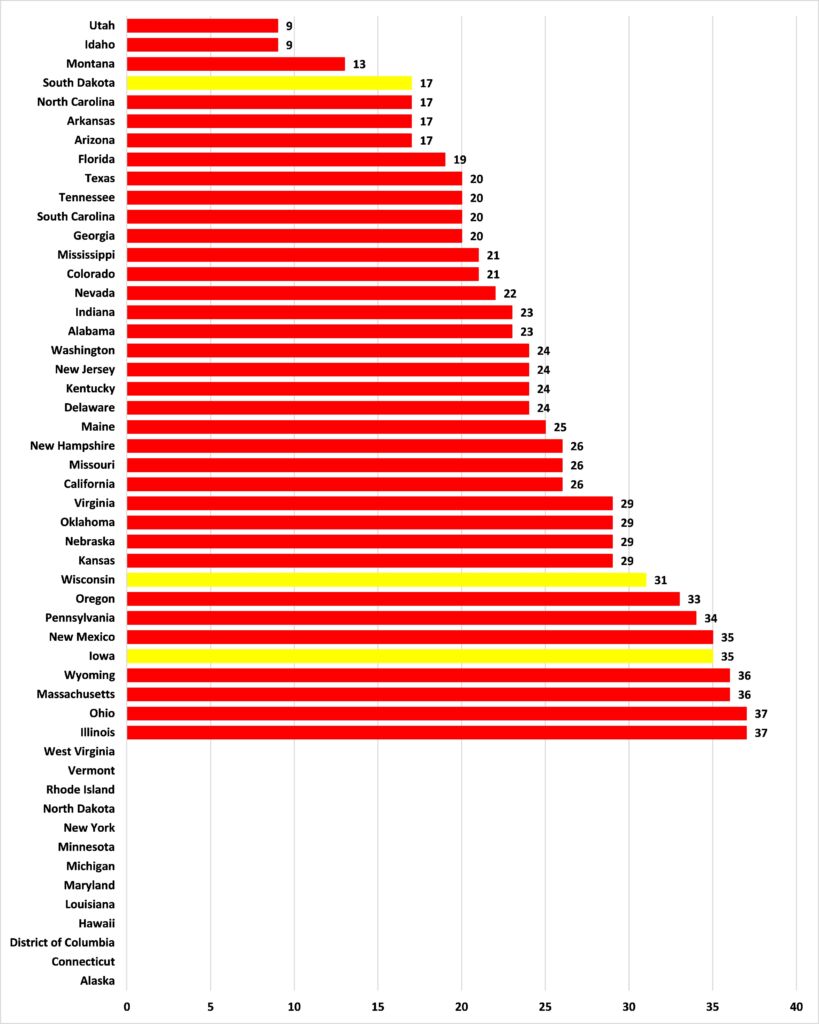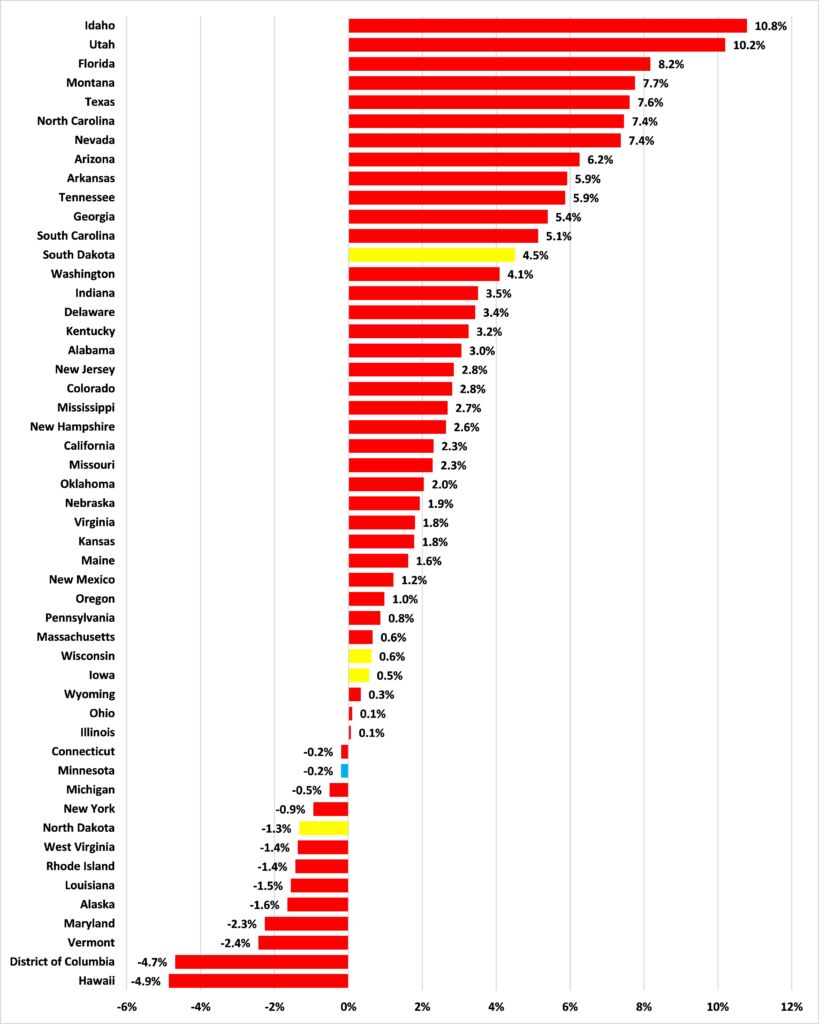New data show that Minnesota is one of only 13 states not to have regained its pre-pandemic number of private sector jobs
Last month, Minnesota’s media celebrated the fact that our state had recovered all the private sector jobs lost in pandemic — none mentioned that this was after 34 other states had already achieved this. The mood was rather more muted this week, when it was announced that the state had lost 5,700 jobs in March so that, as the Star Tribune ruefully notes:
…the state has now dipped back below that threshold and is a few thousand jobs short of that milestone.
Local media tried to put a positive spin on these numbers. Some noted that, while jobs had been lost, the unemployment rate had fallen:
Kare 11: Unemployment drops in Minnesota, but 5,700 jobs lost in March
KNSI: Minnesota Loses Jobs In March But Unemployment Rate Declines
Pioneer Press: State drops 5,700 jobs in March, unemployment rate ticks down
Star Tribune: Minnesota lost jobs in March despite the unemployment rate ticking down
Others buried the loss of jobs completely:
Fox 21: Minnesota’s Unemployment Rate Down Slightly In March
Minneapolis/St. Paul Business Journal: Minnesota unemployment rate down slightly in March
Finance & Commerce: Minnesota’s unemployment rate falls to 2.8%
There is a simple explanation for why Minnesota’s unemployment rate can fall at the same time that the number of jobs falls. As I’ve explained previously:
The unemployment rate is calculated by dividing the number of people who are unemployed but looking for work by the total number of people in the labor force. Crucially, people who are unemployed and not looking for work are not counted in the labor force. Because of this, it is possible for the unemployment rate to fall without the number of people employed rising if people simply give up looking for work.
But what about those private sector jobs? As Figure 1 shows, now that Minnesota has slipped back below its pre-pandemic peak for private sector jobs, it is one of just 12 states and the District of Columbia to have failed to claw these jobs back. Among our neighbors (highlighted in yellow) by contrast, South Dakota regained that peak in 17 months.
Figure 1: Months after February 2020 that private sector jobs regained that peak

Figure 2 shows the change in the number of private sector jobs since February 2020. We see that Minnesota has 0.2% fewer private sector jobs than it did in February 2020 while South Dakota, for example, has 4.5% more.
Figure 2: Change in private sector jobs, February 2020 to March 2023

We also see, third from top in Figure 2, Florida, which has 8.2% more private sector jobs than it did in February 2020. Governor Walz has lately been setting himself up as the ‘anti-DeSantis’. One imagines Governor DeSantis is only too happy with that comparison.